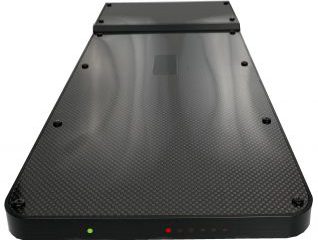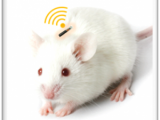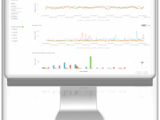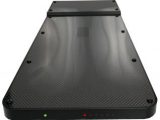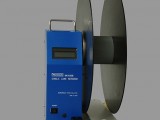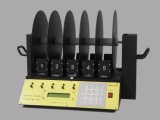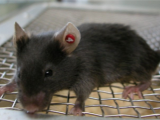UID’s Mouse Matrix was developed for the purpose of assisting researchers in the evaluation of mouse activity. Mouse Matrix’s Home Cage can track the location, movement, and body temperature of one or multiple animals, for either real-time surveillance or logging, using RFID technology.
After implanting UID’s microchip into a mouse, the Mouse Matrix plate reader will be able to monitor these statistics.
CONVENIENT AND EASY TO USE
1.Insert Microchip
After implanting the compact microchip, return the mouse to the cage. The thermometric chip provides reporting of the ID number, mouse movement tracking information, and body temperature.
2.Place Mouse Matrix Under the Cage
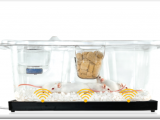 By placing the Mouse Matrix reader under the cage, continuous monitoring of the animals will begin. The reader will scan the cage for a microchip on each zone of the plate. If a microchip is detected, it is activated and the Mouse Matrix begins capturing the relevant information (animal ID, body temperature, plate zone, and time and date) and sends it to the data collection software.
By placing the Mouse Matrix reader under the cage, continuous monitoring of the animals will begin. The reader will scan the cage for a microchip on each zone of the plate. If a microchip is detected, it is activated and the Mouse Matrix begins capturing the relevant information (animal ID, body temperature, plate zone, and time and date) and sends it to the data collection software.
3. Collect Data
UID Mouse Matrix software collects and records data from the Mouse Matrix device in 200 millisecond intervals. The software can automatically capture and provide analysis of physiological and behavioral biomarkers.
*The Mouse Matrix reader plates are divided into eight zones, each with its own dedicated antenna.
Plate zones are scanned sequentially, and antennas detecting a microchip respond with the ID and body temperature, and the reporting antenna determines the mouse’s current location.
(The antenna is not able to follow the microchip)
Due to functional limitations of the RFID tags, a single antenna cannot read multiple RFID tags as they will cause interference and generate read errors.
(When read errors occur, data collection cannot be performed.)
Especially when performing research tracking activity, a limited number of animals (manufacturer’s guideline of 3-4) is recommended.

